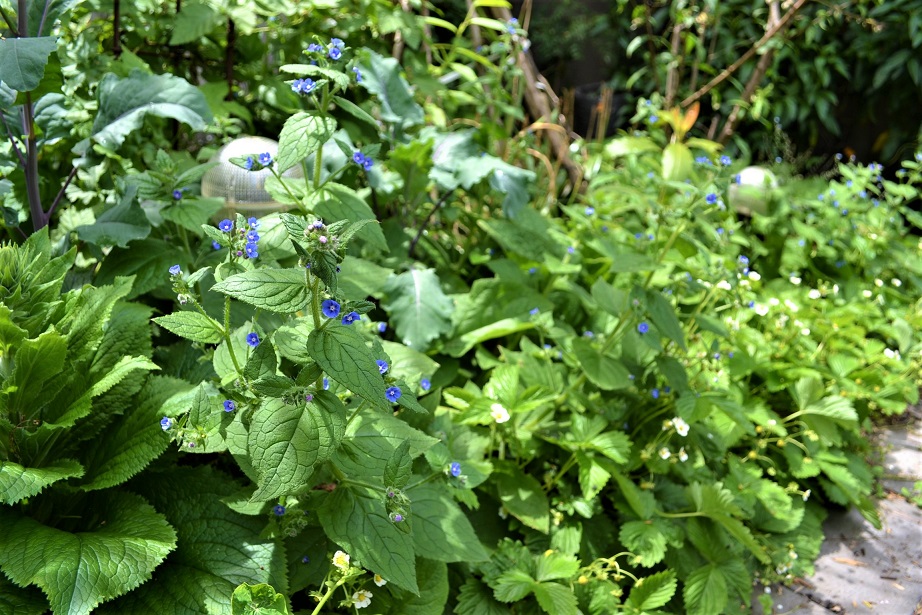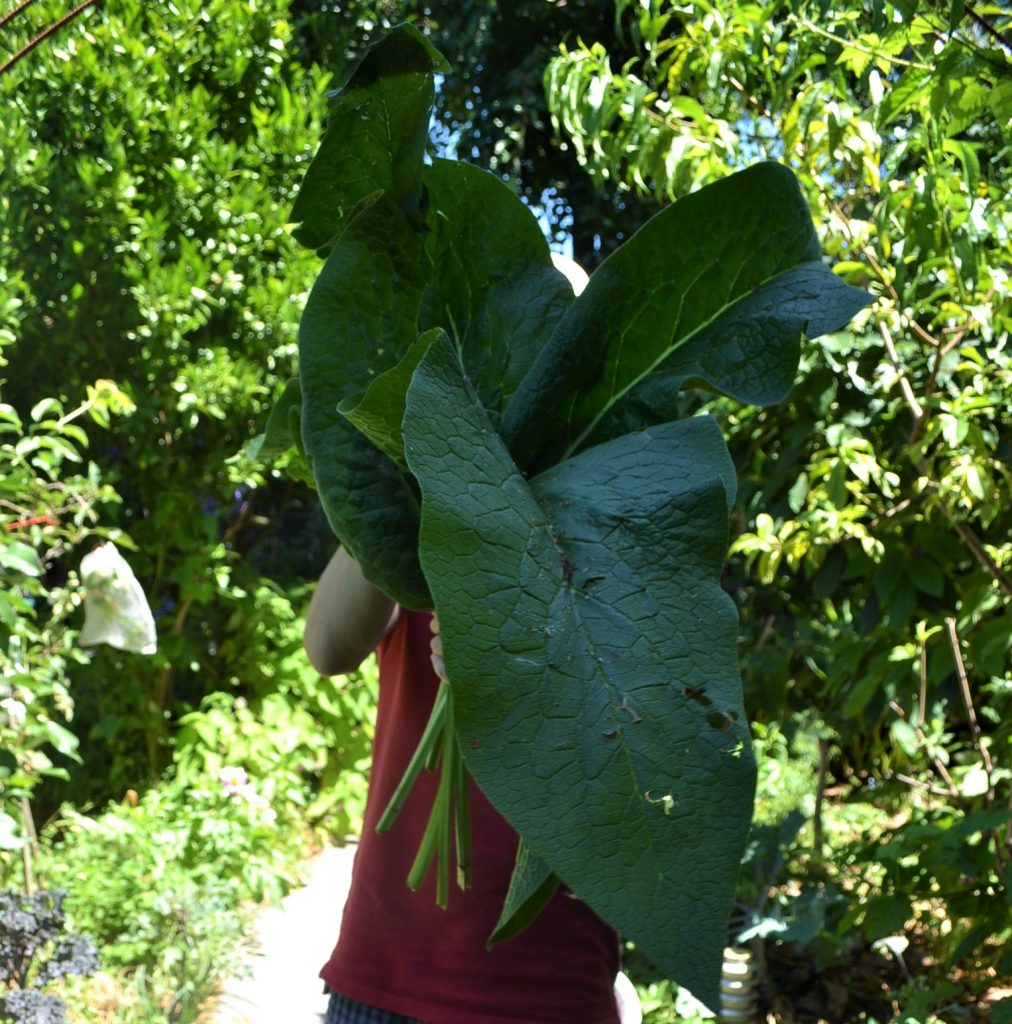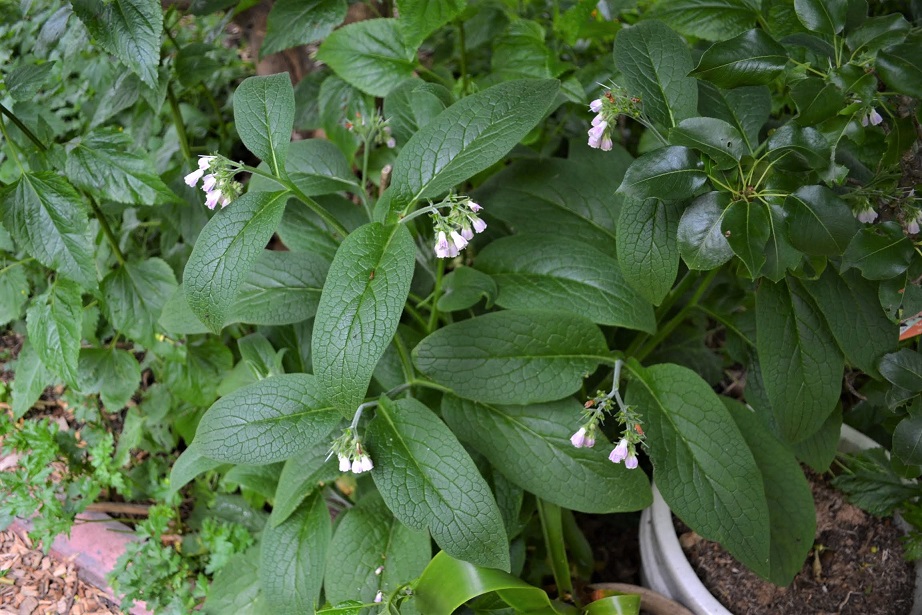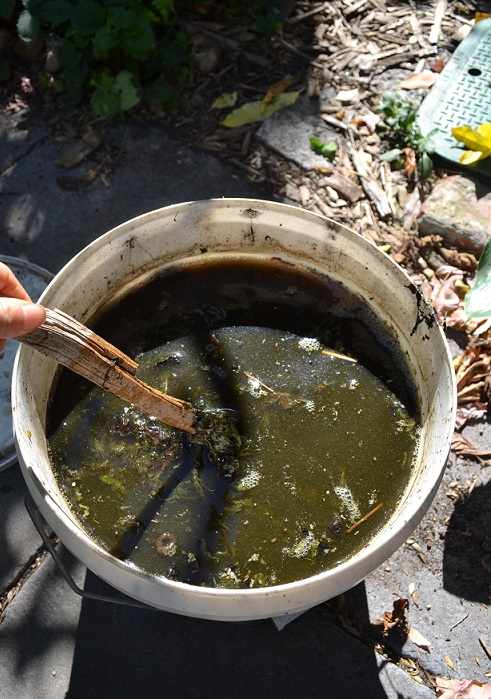You might have heard Comfrey being thrown around as a permaculture buzz word and as a free free fertiliser you can grow yourself! And what is comfrey tea? In this article and video I will explain everything you need to know about Comfrey: What it is, why you should be growing it? and my top tips on how to harness comfrey to supercharge your garden.
What is comfrey?
Comfrey (Symphytum officinale) is a small to medium-sized plant, growing up to 1 meter tall. Native to Asia and Europe, it’s a member of the borage family, and has large furry leaves similar to borage, but less prickly. It is still mildly prickly, but much less painful than borage or stinging nettle!
There are in fact many different types of comfrey. We grow two varieties in our permaculture food forest: one variety that flowers earlier in the season, with small dark purple flowers and is a shorter shrubbier plant. The other variety we grow flowers later with pink bell shaped flowers and spectacularly large leaves on taller plants. This larger leafed variety is called Russian comfrey and is the most common variety you’ll see around.

Why grow comfrey?
Comfrey is an ornamental plant but it’s not just grown for its looks. It has many uses and for this reason, is a versatile and wonderful permaculture plant:
- it’s a great ground cover
- it produces bell-shaped flowers which attract streams of bees and beneficial insects like lacewings, hoverflies, spiders and parasitic wasps
- as a fertiliser. This is how we use it in the garden. Yes it’s an awesome free fertiliser you can grow yourself. Studies have shown it’s very high in potash and potassium which are needed by plants to grow roots and produce lots of fruit.
- as a mulch to preserve your soil moisture levels, and
- finally as a compost accelerator.
Comfrey has incredibly long roots. It is said that it can mine the soil deep below the ground for nutrients that other plants can’t reach. It then brings these nutrients to the surface and traps it in its large leaves. Because of its long tap root, it is a fast grower and is a great source of biomass and compost.
Comfrey is also said to have medicinal uses, particularly in wound healing because of its mucilage properties. It was used by ancient Greeks and Romans to stop heavy bleeding and heal wounds. Before using comfrey for any medicinal purposes, you should do your own research and test it beforehand.

How do you grow comfrey?
The first thing is to get a hold of a plant. Good speciality plant nurseries will often stock them, or if you know a friend or community garden growing them, ask them for some.
What climate? In very cold climates with frost, comfrey will either die back or go dormant and stop growing in winter. In our temperate garden, it stops growing in winter but doesn’t disappear. Don’t worry, comfrey will happily reappear in spring, adoring your garden with its big lush leaves and pretty bell-shaped flowers.
Sun/shade? Comfrey likes some shade so best planted in a location where it is shaded from the harsh afternoon sun, or plant it under fruit trees. The large furry leaves can burn in the intense heat. It is particularly valuable in those dry shade spots under fruit trees that are hard to get anything else to establish.
Where to plant? Comfrey is not fussed about soils and will grow happily in clay as well as in sandy soil.
Like any plant, the better it is fed and looked after the more it will grow. For this reason, we deliberately plant comfrey along the edges of our garden beds to capture any run-off nutrients or water and capture them in its leaves.

In permaculture, the ‘edges’ of a garden have special properties which we can harness. Growing comfrey along the edges of our garden beds soaks up any excess nutrients or water which run-off, preventing them from being leeched out of our soil enabling the comfrey to capture them. In turn, this feeds our comfrey, growing big healthy plants. It’s a win-win. You can see a demonstration of this in our video guide.
Is it Comfrey weedy? Comfrey has a reputation of being weedy, and can spread by even a small bit of root, so just be aware of that. Personally I love tough plants that just keep reappearing, if I don’t want them I simply pull them out and use as fertiliser or give them away.
How do you use comfrey?
There are many different ways to harness the power of Comfrey to supercharge your garden. We demonstrate each of these methods in our video tutorial.

- The easiest way is to simply pull off the leaves from the plant, tear it up and throw them directly onto your garden bed or next to the plant that you want to fertilise. Used in this way, comfrey will act as a mulch protecting the surface of the soil and fertilising your plants at the same time when it breaks down.Yes it’s that easy! Comfrey can be cut back many times a season and will grow back to provide more fertiliser.High in nitrogen, potassium and phosphorus it’s a great fertiliser. This is the easy lazy way to use comfrey and I have to admit the way we use most often.
- Another popular way to use comfrey is to make comfrey tea which is a liquid fertiliser. Choosea bucket with a well fitting lid. You want to keep out mosquitos and the smell of decomposing comfrey, which is something you’ll never forget! We half fill the bucket with leaves, tear up and stuff them in, then fill with water. Cover and let steep until it turns black and there are no discernible pieces of leaves in there, and it’s a black mushy mess. It usually takes around 2-4 weeks. This marks a wonderful concentrated fertiliser. We recommend diluting the liquid to the colour of weak tea before using. It’s a great feed for your plants while they’re fruiting, awesome on your tomatoes, cucumbers, zucchini in summer.
- Some also use Comfrey as a compost accelerator. If you have a stagnant compost or one that is taking too long to break down, add some comfrey! Being high in nitrogen comfrey will help your compost break down faster. Just mix it through and it’ll soon disappear.

This article is part of our series on soil health. Check out our other articles on soil including our Ultimate guide on worm farms and Coffee Grounds in the garden: Friend or foe?
Hi there
Loved 🥰 this video. Can you please let me know where you got your small comfrey from . We have the larger comfrey and didn’t know that there were other types.
Thank you 🙏